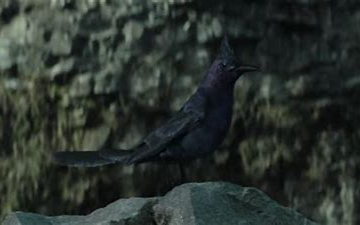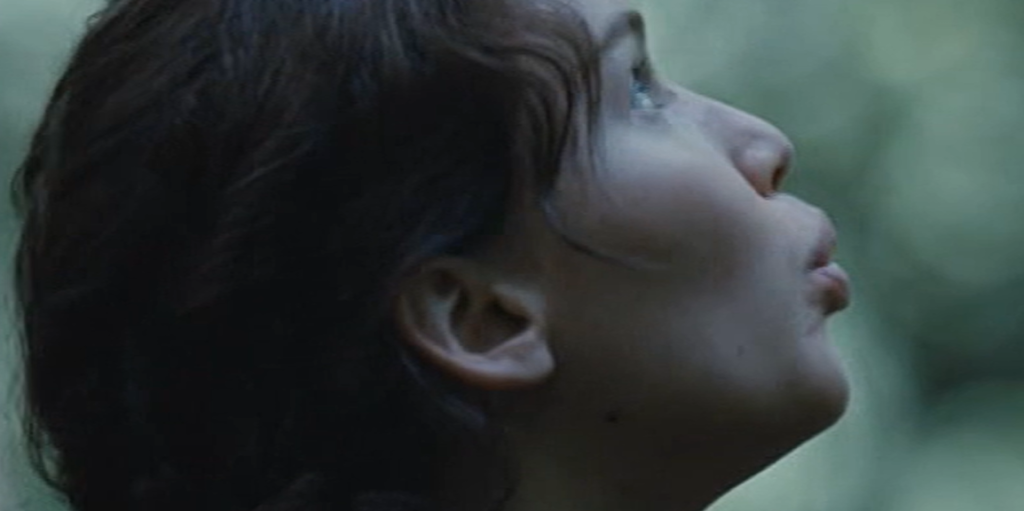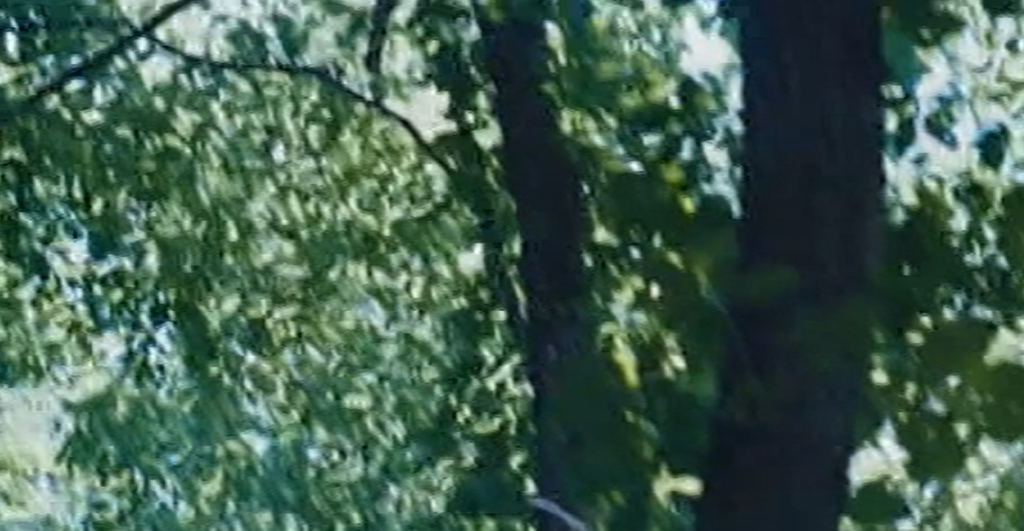
The Hunger Games (2012), directed by Gary Ross, sets up the mockingjay as a unifying symbol of rebellion and resistance against the dystopian ruling of the Capitol. Ross uses this sequence to establish the mockingjay as a balancing force between interpersonal relations and political solidarity. The human-animal connection between the protagonist, Katniss, and the mockingjay enhances the power in unity and collective strength for this revolution.

This sequence shows the first interaction between them, uniting them in a moment of lull during the action-packed, tense survival of the tributes in the Games. The peaceful atmosphere of the forest setting reflects the calm of nature and immerses the audience in the important intimacy of this human-animal exchange. This gives time for the mockingjay to remind Rue of home and allows a rare moment of refuge for Katniss. The close-ups shots of Katniss and Rue’s rare content facial expressions highlights the inspiriting and emotional impact of the mockingjay. The mockingkay’s habitat is well connected in nature and rich earthy tones flood the scene, presenting a stark contrast to the technologically advanced and artificially flamboyant Capitol. Mockingjays were a mutation of a failed experiment with jabberjays by the Capitol; a rebellion in itself. As birds are naturally free animals, they appear incongruent to the restrictions imposed by the Capitol. This juxtaposition with the peaceful setting of this scene suggests the need to reclaim agency, mirroring the districts’ defiance against the barbaric violence that the Capitol ensues.
The non-diegetic sound of the mockingjay’s call is euphonious and distinctive, and it is the only sound heard. There is no grandiose soundtrack; the sole focus is placed upon the union of the mockingjays singing Katniss and Rue’s whistles. It is an unequivocal portrayal of how they co-exist in amity with mutual respect. Subsequently, a union that catalyses the future rebellion, presenting a symbiotic and transformative human-animal relationship. Further, it shows the extent of the mockingjay’s powerful ability to captivate – without even being visible. What is most striking about this sequence is the visual absence of the mockingjay. The camera is angled upwards towards the trees, where the sound appears to be coming from. The upwards angle means the sunlight shines down on the camera through the trees, in place of any glimpse of the mockingjays. There is a celestial quality here that offers a sense of transcendent power in the mockingjay’s omnipresent nature. In this depiction, there are subtle religious connotations, as if a God-like figure overseeing the events of the narrative. This outlines the role of the mockingjay is an exemplary image of how animal connection balances human relations and political solidarity that gives strength to the rebellion.



The camera pans quickly from the close-up of Katniss to her POV looking at the trees, pairing these shots together and amalgamating human and animal. This is emblematic of Katniss’ embodiment of the mockingjay. The speed of the camera movement looking around makes the trees blur, as if the sound of the mockingjays are all around. This alliance between all of the mockingjays without visual impact, engages a portrayal of power and protection in numbers.
This short sequence exhibits how the effective and influential nature of the mockingjay is portrayed to become the unifying and resilient symbol of revolution for Katniss to embody and for the districts to fight for. It is a unique depiction of the subsequent human-animal union that motivates political solidarity against the rulings of the Capitol. The powerful unity depicted in this sequence becomes the driving success of the rebellion that shapes the rest of the film.
Bibliography
- The Hunger Games, dir. by Gary Ross (Lionsgate Films, 2012).
